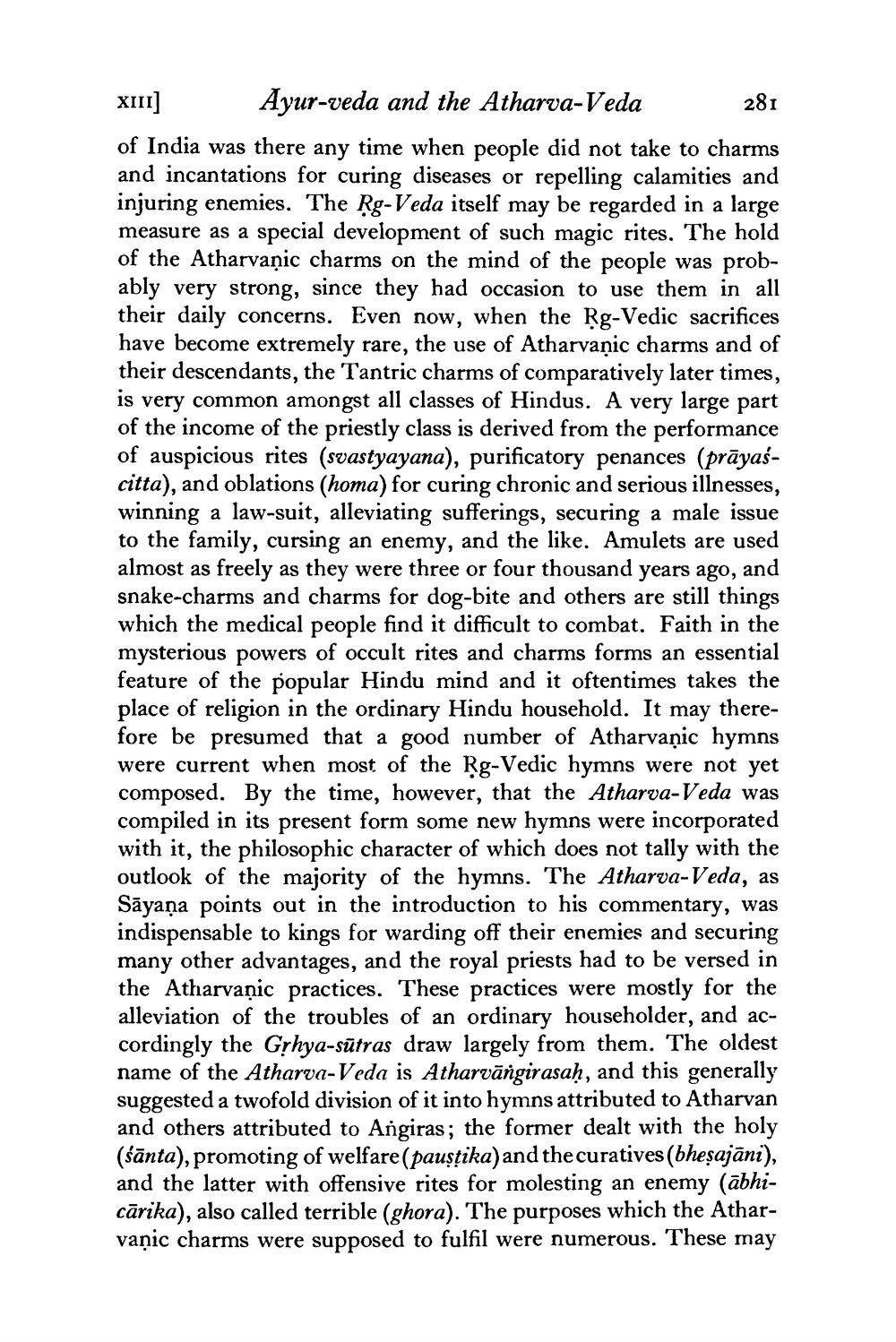________________
XIII] Ayur-veda and the Atharva-Veda 281 of India was there any time when people did not take to charms and incantations for curing diseases or repelling calamities and injuring enemies. The Rg-Veda itself may be regarded in a large measure as a special development of such magic rites. The hold of the Atharvaņic charms on the mind of the people was probably very strong, since they had occasion to use them in all their daily concerns. Even now, when the Rg-Vedic sacrifices have become extremely rare, the use of Atharvaņic charms and of their descendants, the Tantric charms of comparatively later times, is very common amongst all classes of Hindus. A very large part of the income of the priestly class is derived from the performance of auspicious rites (svastyayana), purificatory penances (prāyascitta), and oblations (homa) for curing chronic and serious illnesses, winning a law-suit, alleviating sufferings, securing a male issue to the family, cursing an enemy, and the like. Amulets are used almost as freely as they were three or four thousand years ago, and snake-charms and charms for dog-bite and others are still things which the medical people find it difficult to combat. Faith in the mysterious powers of occult rites and charms forms an essential feature of the popular Hindu mind and it oftentimes takes the place of religion in the ordinary Hindu household. It may therefore be presumed that a good number of Atharvaņic hymns were current when most of the Rg-Vedic hymns were not yet composed. By the time, however, that the Atharva-Veda was compiled in its present form some new hymns were incorporated with it, the philosophic character of which does not tally with the outlook of the majority of the hymns. The Atharva-Veda, as Sāyaṇa points out in the introduction to his commentary, was indispensable to kings for warding off their enemies and securing many other advantages, and the royal priests had to be versed in the Atharvaņic practices. These practices were mostly for the alleviation of the troubles of an ordinary householder, and accordingly the Gịhya-sūtras draw largely from them. The oldest name of the Atharva-Veda is Atharvangirasaḥ, and this generally suggested a twofold division of it into hymns attributed to Atharvan and others attributed to Angiras; the former dealt with the holy (śānta), promoting of welfare (pausţika)and the curatives (bhesajāni), and the latter with offensive rites for molesting an enemy (ābhicārika), also called terrible (ghora). The purposes which the Atharvanic charms were supposed to fulfil were numerous. These may




